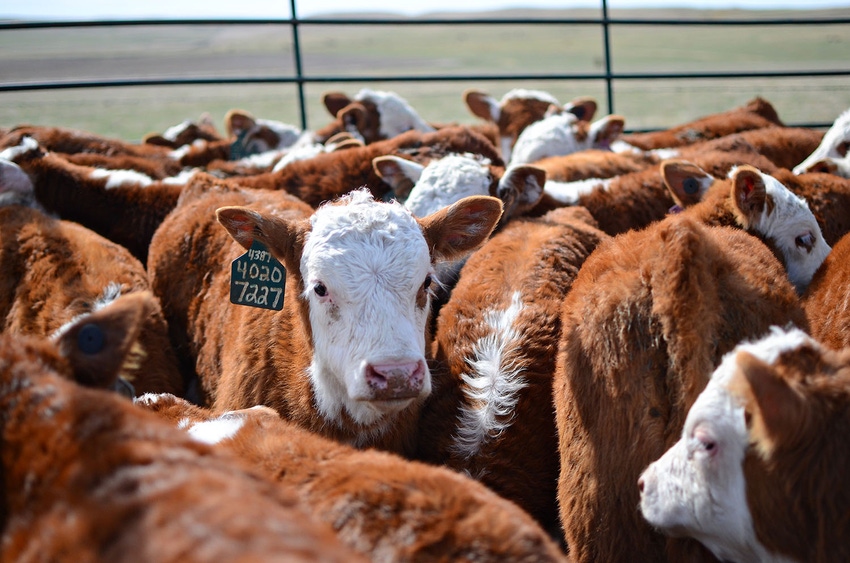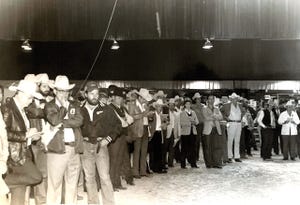How to head off summer pneumonia
Management is the best defense against this killer of small calves.

The bovine lung, says David Smith, is made to get pneumonia.
That’s because, for the size of the animal, it’s not very big, says Smith, a DVM and endowed professor at the Mississippi State University College of Veterinary Medicine. So any kind of challenge, whether it be pathogens, dust or a combination of things, sets the animal up for a rough time in terms of respiratory disease.
While respiratory disease is most often battled in the feedyard, summer pneumonia is a problem for some cow-calf producers. “It’s not the same problem we have when calves are weaned and commingled and shipped and stressed and then get sick in the feedyard,” he says. “This is more of an inherent problem that we see.”
Smith’s specialty is population medicine and summer pneumonia is a perfect example of how that works. “An interesting thing about population medicine is that the solution may not look like it’s related to the problem,” he says.
Applying the 80-20 rule in real time, he says about 20% of cow-calf producers experience problems with summer pneumonia. Most are in the West and most are on operations he considers well managed.
“You’re more likely to have summer pneumonia—pneumonia in calves prior to weaning—if you’re an intensive grazier or if you’re somebody who uses some kind of estrus synchronization program or the larger your herd is,” he says.
“So what’s going on with those practices? They are all opportunities to pull a lot of calves together.”
In an intensive grazing program, cattle tend to be managed in one large, compact group, giving calves more opportunity for close contact, which spreads the virus. And on large, more extensive operations, the opportunity for closer contact happens at watering places, salt or supplement stations, resting areas or anywhere cows and calves tend to congregate.
“And estrus synchronization programs, that’s the oddball thing,” he says. “What would estrus synchronization have to do with it?”
That typically occurs when the calves are around three months old, the time when they’re particularly susceptible to summer pneumonia. If you use an estrus synch program, you’re gathering the cows and sorting off the calves. The calves typically get put in a pen until they can get back with mama—another opportunity for close contact at a critical time in their lives.
Why is that critical? “This is a lot about immunity and the thing that calves are losing at about three months of age is their maternal antibodies.”
Does vaccination help?
Yes. But it’s tricky because timing is the key. And many outfits aren’t set up to work cattle when the calves need the vaccine.
It’s difficult to get an immune response from a vaccine while the maternal antibodies are still at work. That’s why vaccinating at branding is a hit-or-miss deal. If you have a 90-day calving season, the younger end of the calves won’t respond right away to the shots.
That doesn’t mean you shouldn’t vaccinate at branding, however. You get clostridial protection and even if those younger calves don’t respond to the respiratory vaccine then, they’ll respond later if you give them a pre-weaning shot.
Smith says ranchers have been successful in getting an immune response from a two-shot program in calves just prior to 80 days of age, essentially mimicking a branding/pre-weaning regimen. But two shots a couple weeks apart at branding/turnout time is hard to do.
Management to the rescue
The idea behind population medicine is, while you should treat animals that get sick, the idea is to not have them get sick in the first place. Vaccination has long been the go-to practice to make that happen.
In the absence of being able to vaccinate, look at your management program and try to avoid gathering and confining cattle when the calves are 90 to 120 days old. “That’s when they’re most vulnerable to whatever pathogens they might be sharing with each other,” Smith says.
“Comingle early if you need to or comingle late if you have to,” he advises.
That may be difficult to do as well. In that case, think in terms of smaller groups and more space, Smith says.
In an intensive grazing program, run several smaller groups of cattle instead of one big mob if possible. For branding and estrus synch, kick the calves into a pen or trap that’s big enough so they can spread out along the fence with a little social distancing between them.
And, recognizing that this is a calfhood disease, watch your calves while they’re at the susceptible age. “You can catch it early and you’re not caught by surprise when you already have calves in advanced stages of the disease that are less likely to respond to your antimicrobial treatments.”
About the Author(s)
You May Also Like



